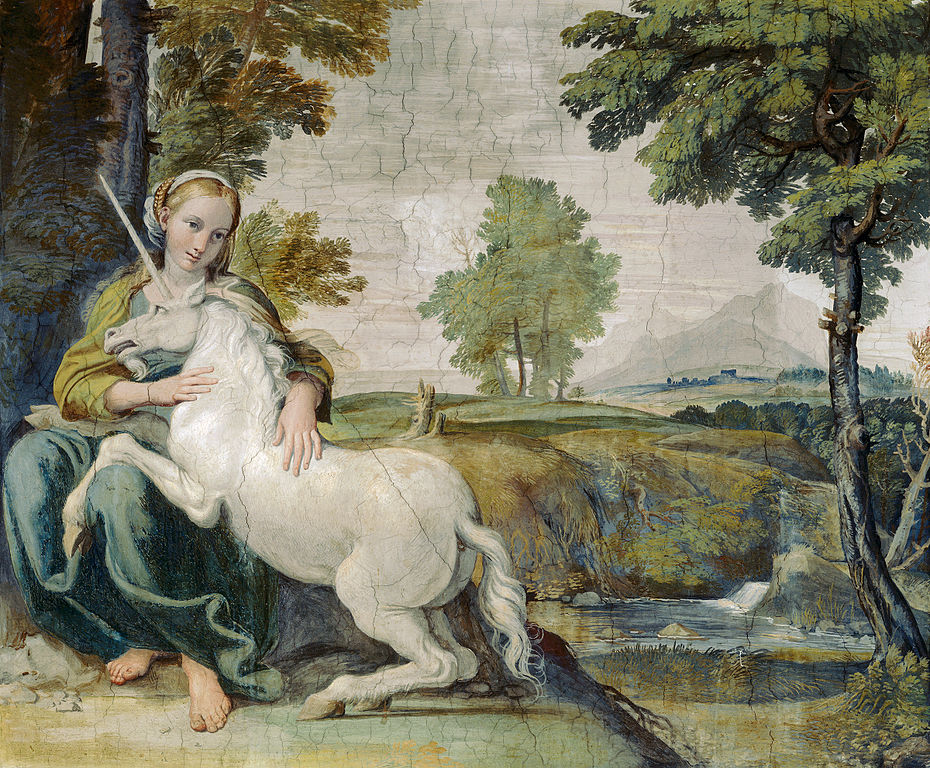Gjeilo, Unicornis Captivatur

Unicornis Captivatur comes from the Engelberg Codex, a manuscript at the Benedictine Abbey of Engelberg in Switzerland. The manuscript dates from about 1400 and contains early German sacred music collected over a period of years. The Latin text is an adaptation of the Physiologus, a Christian text originally in Greek and presumably written in Alexandria in the 2nd century. The Physiologus describes various animals and assigns each with certain symbolic and moral characteristics. It was spread widely through the medieval era and had a strong influence on medieval art and symbols. It inspired bestiaries that became some of the most popular illuminated texts.
Unicornis Captivatur presents the various animals as an allegory for the fall of man and salvation through Christ. The Latin Vulgate and King James Bible translate the Hebrew Re’em, which appears nine times in the Old Testament, as unicorn. The unicorn is described in the Physiologus as small because it is humble and clever because the devil cannot comprehend him. It can only be captured by a virgin.
The pelican more than any other bird loves its young. But when the chicks grow, they peck at the mother’s face. She strikes back in anger, killing them. After three days, she feels remorse and restores them to life by bathing them in her own blood.
The phoenix deliberately lands on the fire of the altar and is consumed, but rises again from the ashes. The crocodile, like the serpent, symbolizes of the devil. The hydra (or hydrus) would find a crocodile sleeping with its mouth open and crawl inside. Once digested, it would then eat its way out of the crocodile’s belly.
This musical setting is by the contemporary Norwegian composer Ola Gjeilo (b. 1978), who now lives in the United States and writes primarily choral music.
The text in English:
The Unicorn is captured,
It’s presented to the royal court
In the hunters’ snare;
Creeping, it freed itself from the pole;
Because it’s wounded, it heals itself
With the viper’s venom.Sing Alleluia
To the dying lamb;
Sing Alleluia, Cry Alleluia
To the victorious Lion.Life returns to the wounded Pelican
After miserable death
In its nest for the sins of the world.
The Phoenix’s light is burnt out,
The ancient sins of the world
Are utterly consumed by flame.Sing Alleluia . . .
The Hydra enters the crocodile,
Deprives it of its entrails, kills it,
And comes back alive.
Three days long
the Lion slept till the King
Awakened it with a roar.Sing Alleluia . . .



